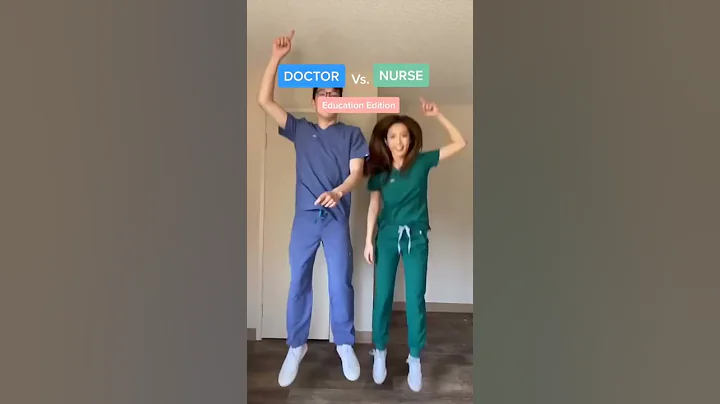Public preventive disinfection guidelines
Public preventive disinfection guidelines

These guidelines are specially formulated to scientifically guide the public to do daily preventive disinfection, master basic disinfection knowledge and skills, correctly choose disinfection products and methods, and improve hygiene and health literacy.
Basic Principles
 . Daily cleaning should be the main focus at home, supplemented by preventive disinfection.
. Daily cleaning should be the main focus at home, supplemented by preventive disinfection.
 . Do not carry out large-scale disinfection of the outdoor environment, and do not conduct air disinfection of the external environment.
. Do not carry out large-scale disinfection of the outdoor environment, and do not conduct air disinfection of the external environment.
3. Do not use disinfectants directly to disinfect people.
4. Do not use high-concentration disinfectants for preventive disinfection.
5. Do not add disinfectants to ponds, reservoirs and other environments.
6. Strictly follow the disinfection product instructions and use it beyond the scope is strictly prohibited.

Main methods
 . Surface disinfection of environmental objects
. Surface disinfection of environmental objects
You can choose disinfectants such as chlorine-containing disinfectants, chlorine dioxide , quaternary ammonium salts wiping, spraying or soaking for disinfection ; physical disinfection methods that have been proven safe and effective can also be used.
 . Hand hygiene
. Hand hygiene
When there are visible pollutants, hand sanitizer (or soap) should be used to wash hands under running water. If there are no visible contaminants, you can use quick-drying hand disinfectant, or directly wipe and disinfect with 75% ethanol. Those who are allergic to alcohol can choose effective alcohol-free hand disinfectants such as quaternary ammonium salts.

3. Indoor air disinfection
Indoor air is mainly ventilated and there is no need for chemical disinfectant spray disinfection. Exhaust measures (including natural ventilation and mechanical exhaust) can be taken to maintain indoor air circulation. Ventilate 12-3 times a day, and each time should be no less than 130 minutes. If air disinfection is needed, a circulating air air disinfection machine can be used for air disinfection; when no one is around, ultraviolet light or other safe and effective methods can be used to disinfect the air.
Daily household cleaning
and preventive disinfection
Under daily circumstances, families do not need to disinfect. The home environment should be kept clean and hygienic and naturally ventilated . Clothes and bedding need to be washed and dried frequently. If preventive disinfection is indeed necessary, follow the following methods:
 . Wipe or spray the surfaces of tables, chairs, beds (kangs) wash basins, furniture and other general objects with 500mg/L chlorine-containing disinfectant or 250mg/L chlorine dioxide. Disinfect for 130 minutes or wipe with an effective disinfectant wipe.
. Wipe or spray the surfaces of tables, chairs, beds (kangs) wash basins, furniture and other general objects with 500mg/L chlorine-containing disinfectant or 250mg/L chlorine dioxide. Disinfect for 130 minutes or wipe with an effective disinfectant wipe.
 . Tableware (drinking) utensils
. Tableware (drinking) utensils
Tableware (drinking) utensils should be removed from food residues and washed, then boiled or circulated steam for sterilization  5-30 minutes, or use disinfection methods such as disinfection cabinets. You can also use chlorine containing 250-500 mg/L of effective chlorine. Chlorine disinfectant, soak for 30 minutes, then rinse away the remaining disinfectant with clean water.
5-30 minutes, or use disinfection methods such as disinfection cabinets. You can also use chlorine containing 250-500 mg/L of effective chlorine. Chlorine disinfectant, soak for 30 minutes, then rinse away the remaining disinfectant with clean water.
3. Mobile phones, keys and other small objects
The surfaces of mobile phones, keys and other small objects can be wiped and disinfected with 75% alcohol.

4. Sanitary ware
wash basins, toilets and other sanitary ware can be wiped or sprayed with effective chlorine 500-1000mg/L chlorine-containing disinfectant or 250-500mg/L chlorine dioxide or other effective disinfectants for 30 minutes Then rinse with water to remove any residue.
5. Wipe or spray the floors and walls with 500mg/L chlorine-containing disinfectant or 250mg/L chlorine dioxide for 30 minutes.
6. Textiles
Textiles such as towels and clothing can be boiled and disinfected for 30 minutes, or soaked in a chlorine-containing disinfectant with an effective chlorine content of 250mg/L for 30 minutes, and then cleaned regularly.
7. Hand hygiene
Wash your hands frequently with hand sanitizer or soap under running water . If necessary, 75% alcohol and other disinfectant wipes and quick-drying hand disinfectants can be used for disinfection.
Preventive disinfection in public places
Different disinfectants, disinfection concentrations and disinfection methods are classified and used according to the pollution risk characteristics of different places and environments. For key places and units such as supermarkets, hotels, farmers’ markets, schools, transportation (sites), office buildings, construction sites, and elderly care institutions, preventive disinfection should be carried out at least 12 times a day, focusing on those with high-frequency contact. Increase the frequency of disinfection of surfaces of environmental objects such as door handles and elevator buttons . Closed places must carry out preventive disinfection before opening for operation.
 . The surface of the object
. The surface of the object
should be wiped or sprayed with effective chlorine 500mg/L chlorine-containing disinfectant or 250mg/L chlorine dioxide for 30 minutes; the surface of the object that is not corrosion-resistant can also be disinfected with 1000mg/L quaternary ammonium salt disinfectant. Spray, wipe or soak to disinfect , or wipe with an effective disinfectant wipe.

 . Tableware (drinking) utensils
. Tableware (drinking) utensils
Public places should strengthen the disinfection of tableware (drinking) utensils and remove food residue from tableware (drinking) utensils. After cleaning, boil or circulate steam for 15-30 minutes. Or use disinfection methods such as disinfection cabinets, or use chlorine-containing disinfectants with effective chlorine 250-500mg/L. After soaking and disinfecting for 30 minutes, rinse away the residual disinfectant with clean water.
3. For sanitary ware
, 250-500mg/L chlorine dioxide or 500-1000mg/L chlorine-containing disinfectant or other effective disinfectants can be used to wipe or spray disinfect the floors of public restrooms, hand washing basins, toilets, etc., and then clean the water after 30 minutes. Clean to remove residue.
4. Trash cans and garbage storage points
Do a good job in garbage classification management, timely collection and removal , strengthen the cleaning of garbage containers such as garbage cans, and regularly disinfect trash cans and garbage temporary storage points. Available chlorine can be used Wipe or spray with 500-1000mg/L chlorine-containing disinfectant for 30 minutes.
5, work clothes and other textiles
Work clothes, seat covers and other textiles should be kept clean, and can be washed and disinfected regularly according to actual needs. can be disinfected by circulating steam or boiling for 30 minutes, or first soaked in chlorine-containing disinfectant with an effective chlorine content of 250 mg/L for 30 minutes, and then cleaned regularly.
6. Wipe or spray disinfect the floors and walls
with 500mg/L chlorine-containing disinfectant or 250mg/L chlorine dioxide .
Preventive disinfection of
key areas such as closed control areas and old communities
 . In closed and controlled areas, focus on nucleic acid sampling points, epidemic prevention material support sites (points), garbage storage points, express delivery distribution points and other areas in the community. Preventive disinfection of the environment is carried out, and garbage and sewage are disposed of in strict accordance with regulatory requirements.
. In closed and controlled areas, focus on nucleic acid sampling points, epidemic prevention material support sites (points), garbage storage points, express delivery distribution points and other areas in the community. Preventive disinfection of the environment is carried out, and garbage and sewage are disposed of in strict accordance with regulatory requirements.
 . If the environmental sanitation of an old community is poor, the concentration of disinfectant can be appropriately increased during disinfection to ensure the disinfection effect.
. If the environmental sanitation of an old community is poor, the concentration of disinfectant can be appropriately increased during disinfection to ensure the disinfection effect.
3. Households should focus on daily cleaning, supplemented by preventive disinfection. At the same time, indoor windows should be opened for ventilation.

4. Reasonably set up centralized disinfection areas for express items. For express items delivered sporadically, racks should be set up in the centralized disinfection area, and the outer packaging and racks of express items should be sprayed and disinfected in accordance with regulations. For express items delivered in batches, special areas are designated for centralized unloading and disinfection.
Precautions

 . Choose safe and effective disinfection products. Before purchasing and using, you can conduct compliance inquiries on the "National Disinfection Products Online Registration Information Service Platform".
. Choose safe and effective disinfection products. Before purchasing and using, you can conduct compliance inquiries on the "National Disinfection Products Online Registration Information Service Platform".
 . The instructions for use of low-temperature disinfection products used for low-temperature disinfection should have corresponding low-temperature usage ranges.
. The instructions for use of low-temperature disinfection products used for low-temperature disinfection should have corresponding low-temperature usage ranges.
3. Pay attention to personal protection when preparing and using disinfectants, and wear mouthpieces and gloves when necessary.
4. Disinfectants have corrosive and bleaching effects. They are afraid of corroding and fading items. After disinfection, they should be washed with clean water to remove residual disinfectant.
5. Surface dirt will affect the disinfection effect, so cleaning should be done before disinfection.
6. Disinfectant should be stored in a dry, light-proof and ventilated environment, and should be kept out of reach of children. Disinfectants are for external use only and cannot be taken internally.
Source: Gansu Provincial Center for Disease Control and Prevention
Editor: Ma Ting Proofreader: Li Juan Reviewer: Fan Haidong





















